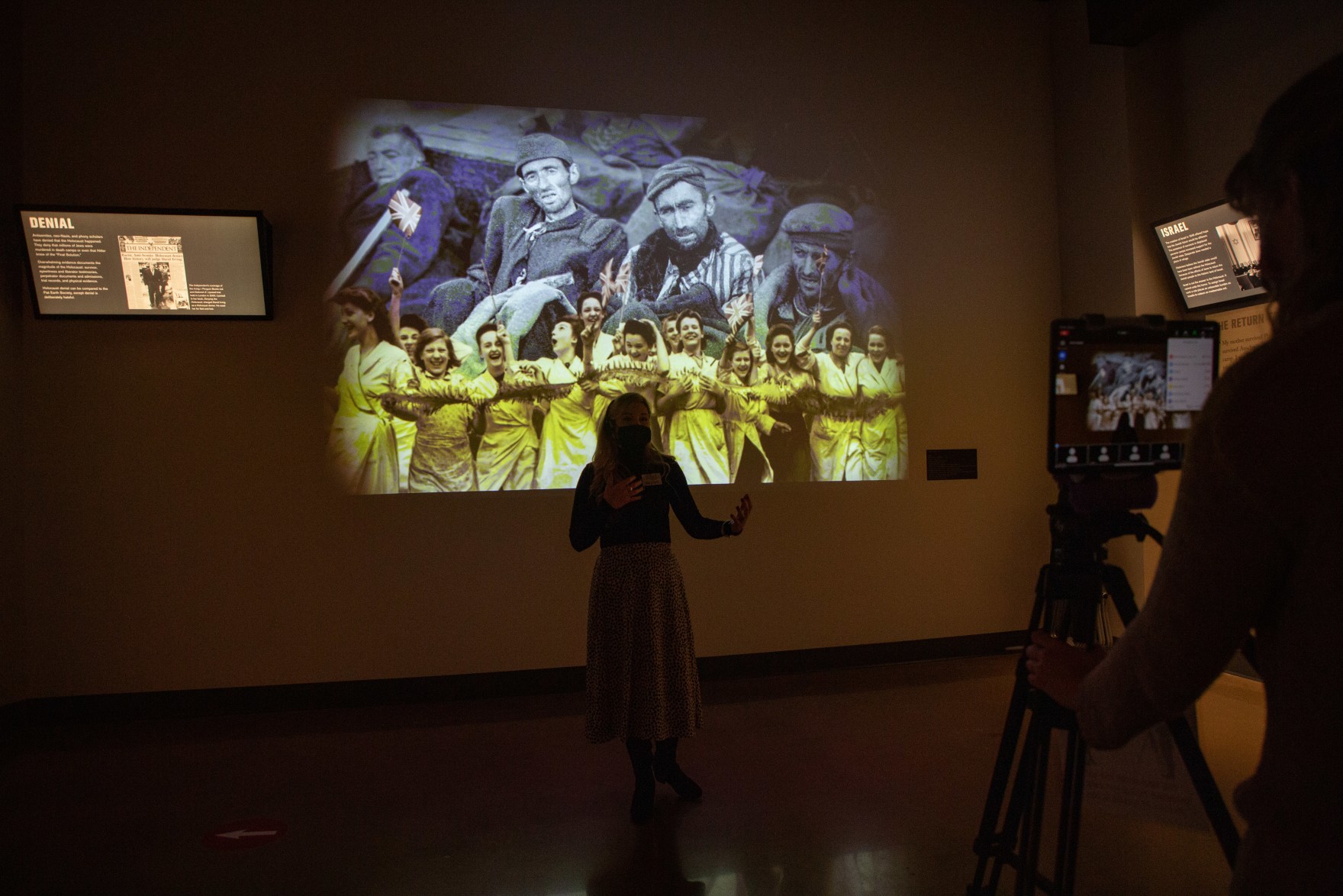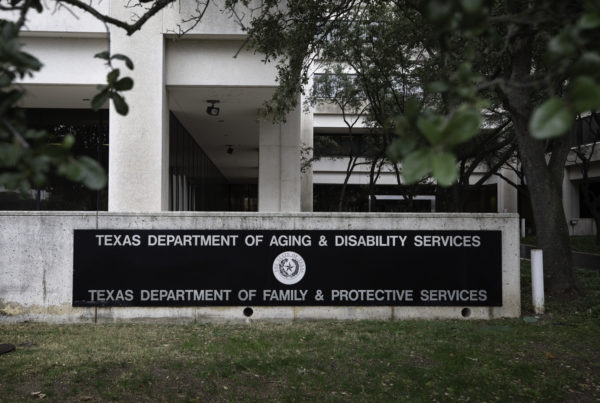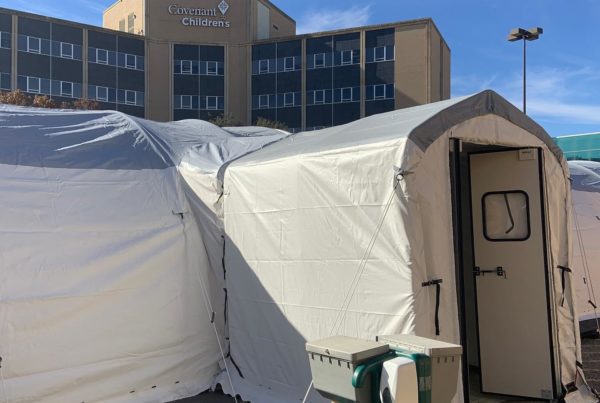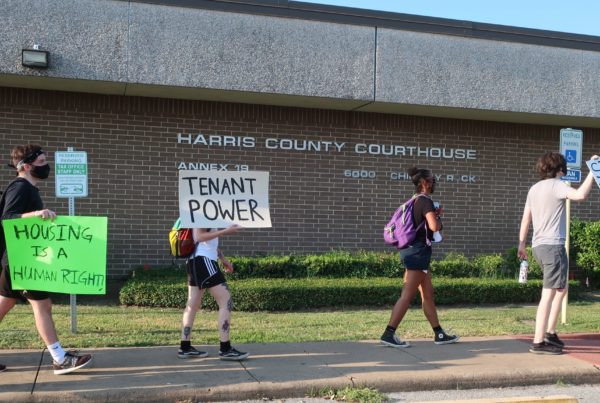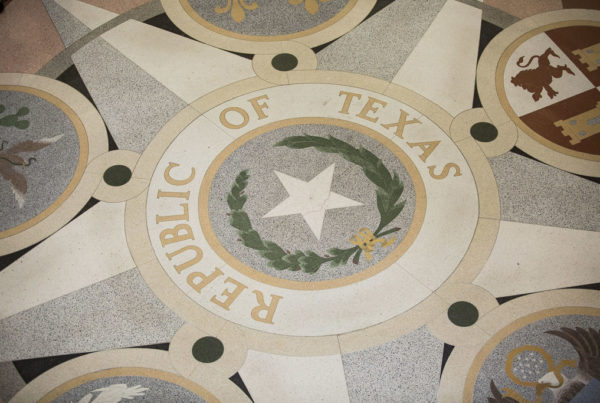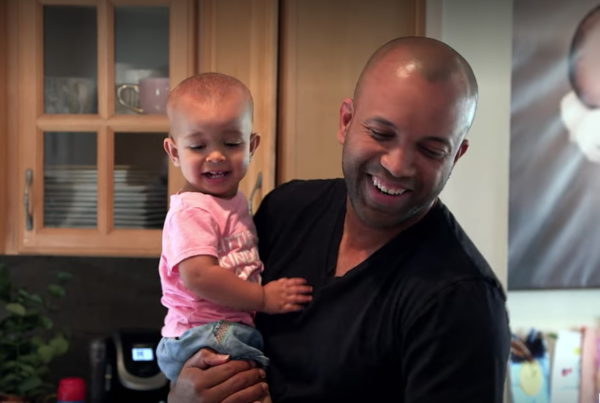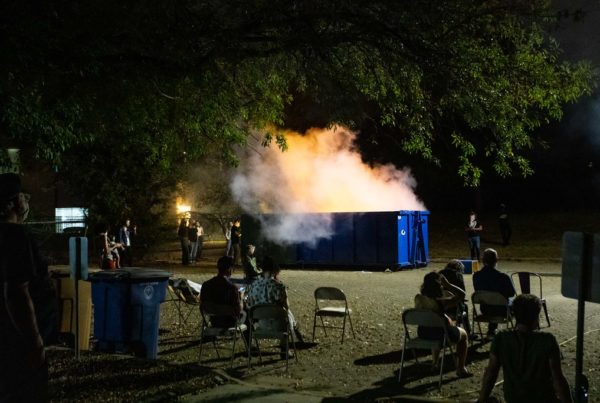From KERA:
A group of Dallas high school students recently fired up their laptops, tablets and phones for a virtual visit to the Dallas Holocaust and Human Rights Museum.
The field trip started like any of the thousands held every year at the facility, with the museum’s top educator leading the way.
“Good morning everybody, my name is Claire,” Claire Robinson said. “I’m the Senior Museum Educator at the Dallas Holocaust and Human Rights Museum.”
Robinson stood at the entrance of the museum’s Shoah wing, which focuses on World War II and the Holocaust.
The class taking the virtual tour included 16 juniors and seniors from Dallas’ Thomas Jefferson High School. They were all online, watching Robinson through a video feed handled by a colleague.
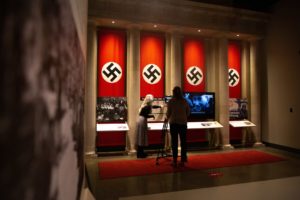
Claire Robinson, Senior Museum Educator at the Holocaust Museum in Dallas, gives a virtual field trip tour to Dallas ISD students, on Mon., Dec. 7.
Robinson continued her introduction, facing an iPad as she addressed the students.
“We’re going to ask to keep your videos off because that helps the connection when we’re in the exhibit,” she explained.
With the help of a little technology, this field trip was nearly identical to what students would’ve experienced if they were there in person. At other museums, some virtual field trips — usually gallery tours — are pre-produced and pre-packaged. This visit, however, preserves live interaction.
“My first question for you,” Robinson asked the students, “Has anybody heard of the holocaust and if so, what words do you associate with the holocaust?”
Students delivered answers through their devices. “Jews,” said one. ”Good,” Robinson said.
“Gas chambers,” said another student. “Genocide,” said another. “Great word,” Robinson replied.
On screen, she started walking through the exhibit, detailing how Hitler’s anti-Semitic rage and his ability to infect others with inhumane hate led to the infamous concentration camps. But Robinson explained that killing squads came first.
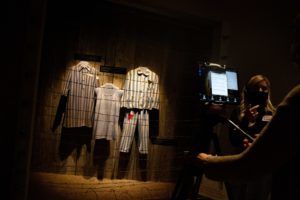
The museum educators virtually show students the clothing given to prisoners at concentration camps in Poland, which caused many of them to die of hypothermia due to lack of proper clothing.
“So as the German army moves east and takes over territory after territory, there’s a group of men that follow the German army, and they’re called the Einsatzgruppe, mobile killing squad,” Robinson said. “They would get to that town, they would round up all the Jews living in that community, with the help of the local neighbors right? Because they don’t know who’s Jewish…“
Those squads would shoot them, Robinson said, after the victims were forced to dig their own graves. Two million were murdered this way, she said, standing in front of a map showing where mass graves have been found. They’re represented by bullets, not stick pins. More than 80 years since these crimes happened, graves continue to be discovered.
It’s a lot.
Thomas Jefferson Senior Danna Reyna first learned of the Holocaust in school, years ago.
“As a kid,” Danna said, “you don’t expect that kind of hate in the world. It was kind of like shocking there was a lot of hate in the people to actually go and murder one whole population… And still now with this tour, it’s still now pretty shocking.”
Shock is partly the point. A tenet of the museum encourages action. Urging visitors don’t just be a bystander — become what the museum calls an upstander.
Mary Pat Higgins, the museum’s CEO, said the field trip gives students an opportunity for self-reflection and action in their own lives.
“We know from past experience, if we can get students to come to the museum and go through this experience we can help them think about the dangers of unchecked prejudice and hatred,” Higgins said. “And we can inspire them to stand up to it when it occurs in their daily lives.”


